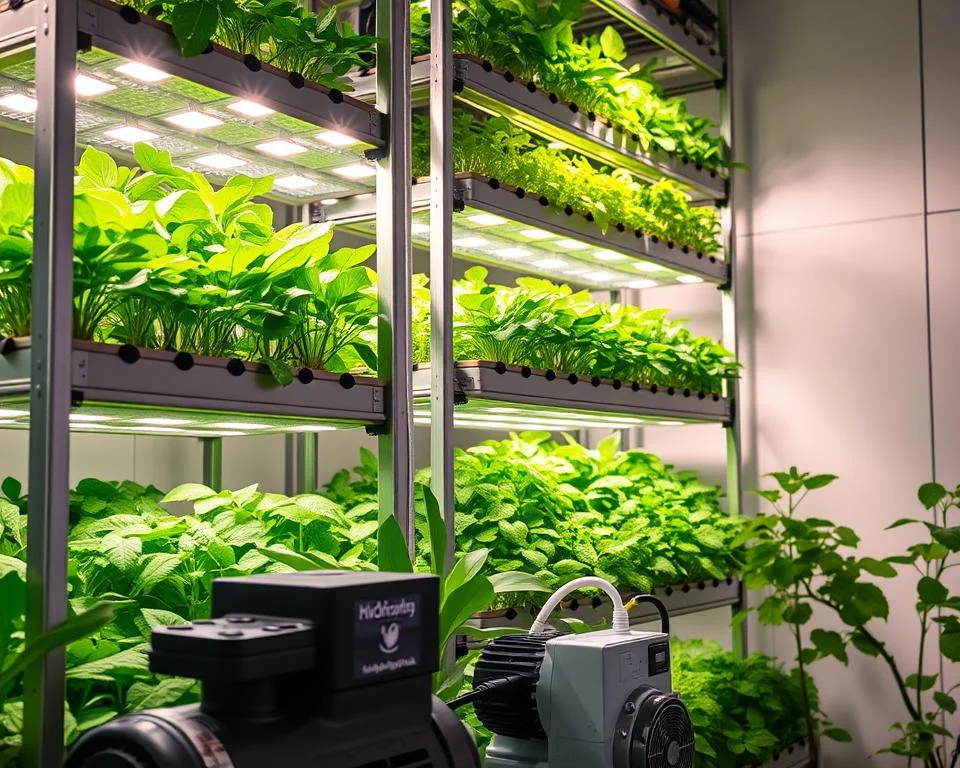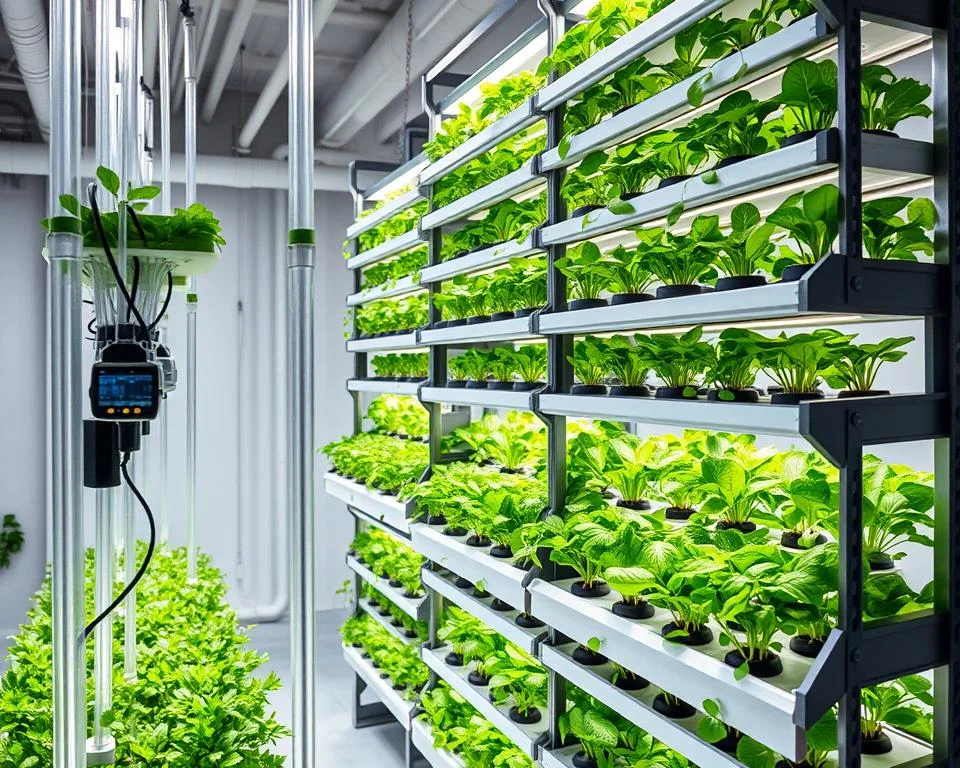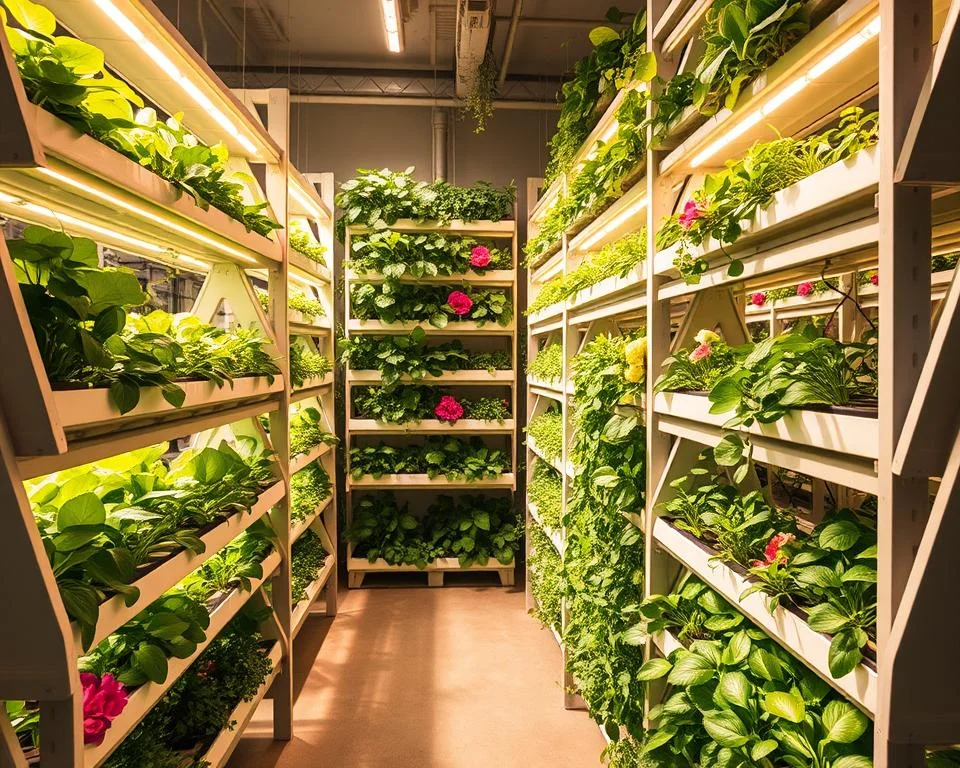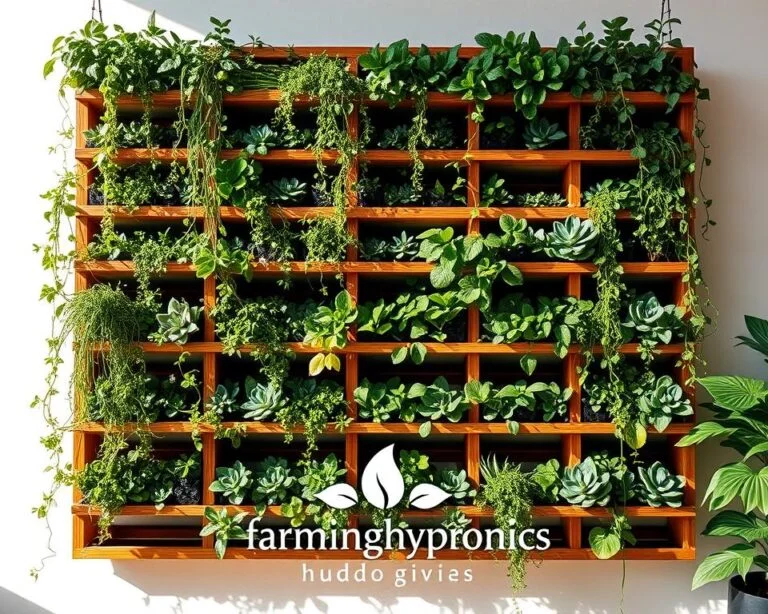Soilless Gardening: Vertical Hydroponic Techniques
Imagine transforming a small urban apartment into a thriving garden—without a single handful of soil. Thanks to soilless gardening, especially hydroponic systems, this vision is entirely possible. As cities grow and farmland shrinks, vertical hydroponics offers a smart, space-efficient way to cultivate fresh produce almost anywhere.
Soilless gardening revolutionizes traditional methods by delivering nutrients directly through water, eliminating the need for earth and opening new possibilities for both city dwellers and commercial growers.
Embarking on your vertical garden journey means understanding how these systems convert tight spaces into green oases. Whether you live in a high-rise or simply want a sustainable way to grow food at home, soilless gardening provides a modern, eco-friendly path to healthy harvests.
Key Takeaways
- Hydroponic systems use up to 90% less water than traditional gardening
- Plants can grow 30% faster with direct nutrient access
- Vertical gardens maximize limited urban spaces
- Reduced pesticide use due to controlled growing environments
- Year-round cultivation is possible with hydroponic techniques
Understanding Vertical Hydroponic Systems
Vertical farming is a new way to grow plants in cities and small spaces. It uses advanced indoor growing methods. This approach combines different ways to grow plants without soil, making it efficient.
Types of Hydroponic Growing Methods
Modern vertical farming uses several advanced hydroponic techniques:
- Nutrient Film Technique (NFT): Thin nutrient streams flow constantly by plant roots
- Deep Water Culture (DWC): Plants float in nutrient-rich water
- Ebb and Flow Systems: Plants get flooded and then drained with growing media
- Aeroponics: Roots hang in air, getting misted with nutrients
- Aquaponics: Fish and plants grow together in a closed system
Benefits of Soilless Cultivation
Vertical hydroponic systems offer big benefits for farming:
- They use up to 90% less water than traditional farming
- Plants grow 25-30% faster because nutrients are directly available
- They can produce crops all year, not just in certain seasons
- They use much less pesticide
- They make the most of small spaces in cities
Key Components of Vertical Systems
Vertical farming needs the right equipment and planning. Key parts include grow lights, nutrient delivery systems, pumps, and controlled environments. These elements help create a perfect place for plants to grow well.
Soilless Gardening: Essential Equipment and Setup

Starting a successful indoor garden needs the right tools. Urban gardeners can turn small areas into green spaces with the right gear and know-how.
Your hydroponic garden’s success relies on key parts:
- Grow Lights: Essential for artificial sunlight
- Nutrient Solutions: Special fertilizers for growing without soil
- pH and EC Meters: Check plant nutrition and health
- Air Pumps and Air Stones: Keep roots oxygenated
- Dosing Pumps: Automate nutrient feeding
Choose your equipment based on your garden’s size. Small gardens need basic tools, while big ones require advanced systems.
| Equipment Type | Function | Recommended Usage |
|---|---|---|
| LED Grow Lights | Provide spectrum-specific plant lighting | 12-16 hours daily |
| Digital pH Meter | Monitor nutrient solution acidity | Check every 2-3 days |
| Nutrient Dosing System | Automate precise nutrient delivery | Programmed intervals |
Pro tip: Get quality sensors for tracking multiple parameters at once. This boosts your garden’s efficiency.
Choosing the right equipment greatly boosts your garden’s success. With the right tools, you’ll create the best environment for your plants to thrive.
Nutrient Management in Vertical Gardens
Greenhouse gardening needs careful nutrient management, like the nutrient film technique. Your vertical hydroponic system’s success depends on smart nutrient strategies.

Good nutrient management means watching key factors that affect plant health and growth.
pH and EC Monitoring
Keeping pH levels right is key in hydroponics. Most plants do best in a pH of 5.5 to 6.5. This helps them absorb nutrients well. Tracking EC tells you how much nutrient is in your solution.
- Check pH levels daily with digital meters
- Adjust nutrients to keep pH between 5.5 and 6.5
- Watch EC to avoid nutrient burn or lack
Essential Nutrient Solutions
The nutrient film technique needs a balanced mix of nutrients. Plants need certain elements for strong growth.
| Nutrient Category | Essential Elements | Plant Growth Impact |
|---|---|---|
| Macronutrients | Nitrogen, Phosphorus, Potassium | Overall plant development |
| Micronutrients | Calcium, Magnesium, Sulfur | Cellular function and enzyme activation |
Water Quality Requirements
Water is key for carrying nutrients in your vertical garden. High-quality water stops nutrient buildup and keeps plants well-nourished.
- Use filtered or reverse osmosis water
- Keep water temperature between 18-27°C
- Change nutrient solution every 7-10 days
By following these nutrient management tips, your vertical hydroponic garden will flourish. This will help your plants stay healthy and grow well.
Advanced Growing Techniques for Vertical Systems
Innovation in indoor farming is changing how we grow food. With more people and less land, vertical farming is a key solution. It lets you use space better in cities where old farming methods don’t work. New vertical farming methods can make crops 240 times more than traditional farming.
LED lights are a big step forward in indoor farming. They use 40% less energy and give plants the best light. Eden Green Technology’s farms use 90% less light energy by using natural sunlight well. These systems can grow over 200 types of hydroponic produce in one place.
Artificial intelligence is making indoor farming better by monitoring and adjusting the environment. It uses machine learning to boost crop production by 20-30%. This makes farming more reliable and uses 98% less water than old farming methods.
The future of city farming includes using green energy and smart tech. By 2050, 80% of people will live in cities. Investing in vertical farming could be part of a $12.77 billion market growing at 24.8% a year. It’s an exciting area in farming technology.







